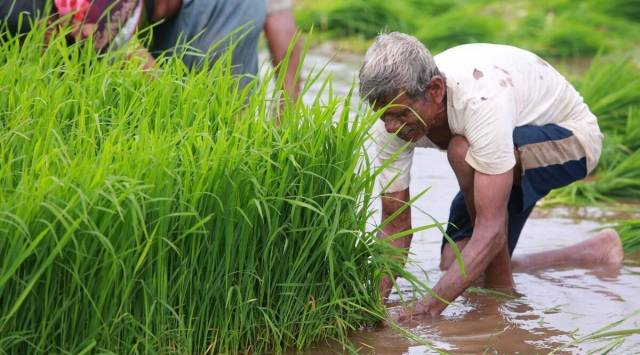Kharif sowing in the country has taken a massive hit due to lack of rains. Data released by the Union government on Friday showed 140.52 lakh hectares of sowing as against 184.44 lakh hectares last year. And with the southwest monsoon likely to continue in its weak phase till the end of June, there is growing uncertainty over this year’s remaining kharif sowing.
India’s highest regional rainfall deficiency of minus 31 per cent (from June 1 to June 24) is being reported from the central India region, covering Gujarat, Maharashtra, Madhya Pradesh, Chhattisgarh, Jharkhand and Odisha.

“Except Marathwada, most areas in central India are under stress due to deficient rainfall received in this season so far. There are no favourable systems likely to form that could bring rains over central and interior peninsular India, at least till the end of June,” said Medha Khole, scientist, India Meteorological Department (IMD), Pune.
This could mean that deficient June rainfall resulting in poor soil moisture could hit major kharif cultivation areas in the country.
Among the kharif crops, oilseeds have taken the maximum hit with the country reporting 47.45 per cent year-on-year dip. Only 11.48 lakh hectares of area has come under oilseed from last year’s 22.41 lakh hectares. Similarly, rice (19.59/36.03 lakh hectares), pulses (8.70/13.62 lakh hectares), coarse cereals (11.08/18.06 lakh hectares) and cotton (31.83/37.84 lakh hectares) have reported dip in sowing. The only crop that has reported a positive growth is sugarcane with farmers taking the cash crop over 50.74 lakh hectares this season as against 50.16 lakh hectares last year.
While the sowing window of oilseeds such as soybean and pulses like tur is far from over, growers of moong and urad are a worried lot. The sowing window of these two crops closes by June-end as against soybean, cotton, tur and other crops that can be sown till the end of July. Farmers in most states are waiting for enough soil moisture to accelerate their sowing operations.
Since the monsoon onset over Kerala on May 29, a majority of rainfall recorded has been either due to western disturbances and allied systems or convective activities resulting in thunderstorms — that too, as late as in third week of June.
Story continues below this ad
Last week’s record rainfall over Assam and Meghalaya was predominantly due to southerly winds from the Bay of Bengal. Earlier this week, an interaction of active western disturbances caused snow, heavy rain and hail over parts of Jammu and Kashmir, Himachal Pradesh and Ladakh. Rainfall along the west coast too picked up over the last few days.
All these high rainfall events collectively pushed the all-India weekly rainfall (June 16 – 22) to +45 per cent – the first week with surplus rainfall this year. But seasonal rainfall remained 4 per cent short of normal (till June 24) after touching the normal figure for a day on Thursday. So far, India has recorded 115.2mm rainfall.
On the monsoon’s further advance, Khole said that there was no progress likely during the next three to four days. This means that the monsoon would reach Delhi only around the normal onset date, which is June 30.
Meanwhile, the Met department has warned of thunderstorms with moderate intensity rainfall over Uttar Pradesh and Uttarakhand on June 27 and 28. Rainfall will continue along the west coast during the next five days.









